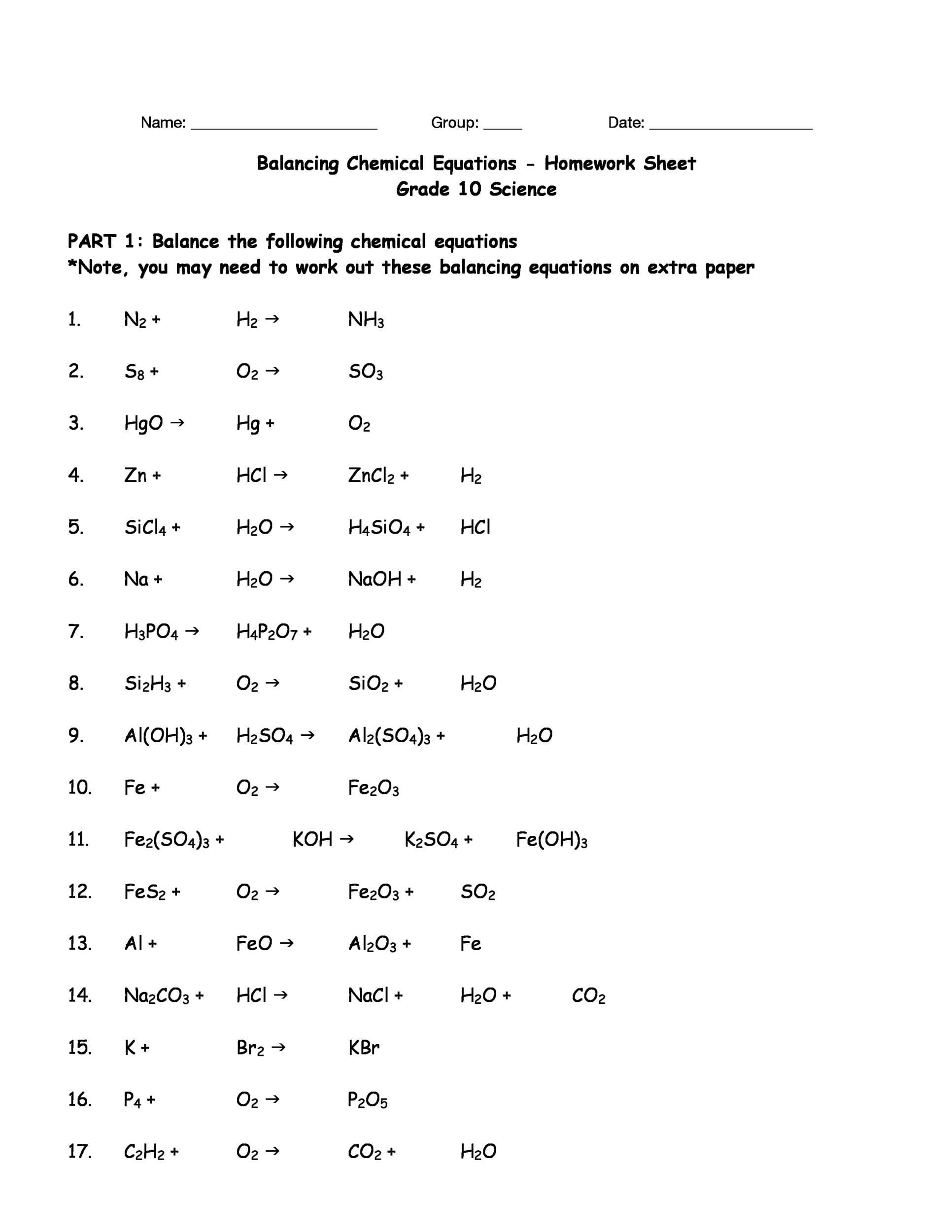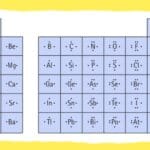Ready to conquer the world of chemistry? This guide unlocks the secrets to mastering balancing chemical reactions using worksheets, transforming you into a true equation wizard. Whether you’re a seasoned chemist or just starting your journey, this comprehensive resource provides the tools and techniques you need to confidently balance any chemical equation.
Why Balancing Equations is Essential
Before diving into the how-to, let’s explore the why. Balancing chemical equations isn’t just a classroom exercise; it’s fundamental to understanding how the world around us works.
The Law of Conservation of Mass
At the heart of balancing equations lies the Law of Conservation of Mass. This fundamental principle states that matter cannot be created or destroyed in a chemical reaction, only rearranged. Balancing an equation ensures that the number of atoms of each element is the same on both sides of the equation, accurately reflecting this law.
Unlocking Stoichiometry
A balanced chemical equation is the key to stoichiometry—the study of quantitative relationships between reactants and products in chemical reactions. Stoichiometry allows us to predict how much product can be formed from a given amount of reactants, or vice versa. This has practical applications in fields ranging from industrial chemistry to medicine. Without balanced equations, these calculations would be impossible.
Balancing Equations: A Step-by-Step Approach
Now, let’s break down the process of balancing chemical equations into manageable steps:
Write the Unbalanced Equation: Start with the correct chemical formulas for the reactants and products. This is your starting point.
Inventory the Atoms: Count the number of atoms of each element on both the reactant and product sides. A simple table can help keep things organized.
Adjust Coefficients: Coefficients are the numbers placed in front of chemical formulas to balance the equation. They indicate the number of molecules of each substance involved. Adjust the coefficients to ensure the same number of atoms of each element are present on both sides of the equation.
- Tip: Begin with elements that appear in only one compound on each side of the equation. Save hydrogen and oxygen for last, as they often appear in multiple compounds.
- Advanced Tip: For complex equations, using fractional coefficients initially can sometimes simplify the process. Remember to multiply the entire equation by a common denominator to convert fractions to whole numbers in the final balanced equation.
Verify Your Work: Double-check your work by recounting the atoms on both sides. The number of atoms for each element should be identical.
Different Reaction Types and Balancing Techniques
Chemical reactions come in various forms. Familiarizing yourself with these types can make balancing easier.
Combination Reactions
In combination reactions, two or more substances combine to form a single product. A + B → AB.
Decomposition Reactions
Decomposition reactions involve a single compound breaking down into two or more simpler substances. AB → A + B.
Single-Displacement Reactions
Single-displacement reactions occur when one element replaces another element in a compound. A + BC → AC + B.
Double-Displacement Reactions
In double-displacement reactions, the positive and negative ions of two ionic compounds exchange places. AB + CD → AD + CB.
Combustion Reactions
Combustion reactions involve a substance reacting with oxygen, often producing heat and light.
The Combustion Reaction Method
For combustion reactions, a specific approach can be helpful. Balance the carbon and hydrogen atoms first, then balance the oxygen atoms.
The Inspection Method
For other reaction types, the inspection method, or trial and error, is commonly used. This involves systematically adjusting coefficients until the equation is balanced.
Worksheet Wonders: Your Practice Playground
Worksheets are invaluable tools for mastering balancing equations. They provide:
- Targeted Practice: Worksheets can focus on specific reaction types, allowing you to hone your skills in different areas.
- Immediate Feedback: Worksheets often include answer keys, enabling you to check your work and identify areas for improvement.
- Reinforced Understanding: Repetition through worksheets solidifies your understanding of balancing concepts.
Visualizing Chemistry: Beyond the Equations
Visualizing the reactions at an atomic level can deepen your understanding. Techniques like color-coded atoms, molecular models, and animations can transform abstract equations into tangible representations of molecular interactions.
Real-World Applications: It’s Not Just Theory!
Balancing equations is crucial in numerous real-world applications:
- Industrial Chemistry: Determining the amounts of reactants needed to produce a desired amount of product.
- Environmental Science: Analyzing the impact of chemical reactions on the environment.
- Medicine: Calculating drug dosages.
Expert Tips and Tricks
- Start with the most complex molecule.
- Balance elements present in only one reactant and one product first.
- If polyatomic ions appear on both sides of the equation, treat them as single units.
- Don’t be afraid to use fractional coefficients initially, but remember to convert them to whole numbers in your final answer.
Ongoing Research and Future Directions
While the basic principles of balancing chemical equations are well-established, research in chemistry is continually evolving. Scientists are exploring new reaction pathways and developing more sophisticated models to understand complex chemical systems. This ongoing research may lead to new techniques and insights into balancing equations in the future. Some experts believe that incorporating computational methods and artificial intelligence could revolutionize the way we approach balancing complex chemical equations.
Conclusion
Mastering balancing chemical reactions is a cornerstone of chemistry success. With dedicated practice using worksheets, coupled with visualization techniques and an understanding of the underlying principles, you’ll be well-equipped to tackle any chemical equation that comes your way. Remember, practice makes perfect! So, grab your worksheets, embrace the challenge, and embark on your journey to becoming a balancing equation master. Don’t hesitate to explore additional resources and seek guidance when needed. The world of chemistry awaits!
- Unlock Elemental 2 Secrets: Actionable Insights Now - April 2, 2025
- Lot’s Wife’s Name: Unveiling the Mystery of Sodom’s Fall - April 2, 2025
- Photocell Sensors: A Complete Guide for Selection and Implementation - April 2, 2025

















1 thought on “Mastering Balancing Chemical Reactions Worksheets: Your Comprehensive Guide”
Comments are closed.